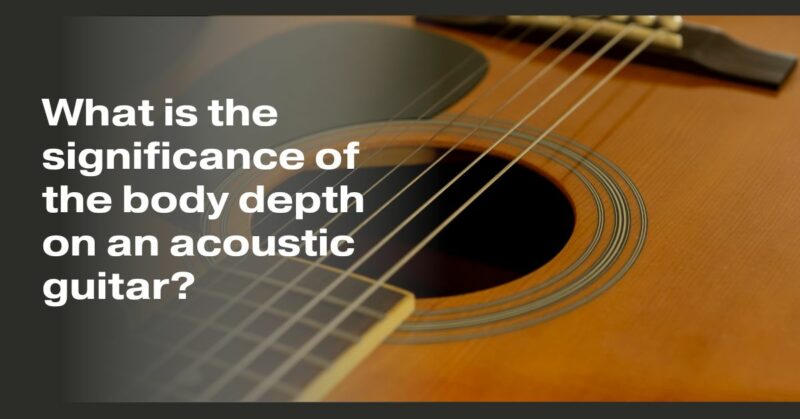When choosing an acoustic guitar, players often consider various factors, such as tonewoods, shape, and size. Among these crucial elements, the body depth plays a significant role in shaping the instrument’s sound and comfort. In this article, we’ll explore the significance of body depth on an acoustic guitar and how it affects both the guitar’s sonic characteristics and the player’s experience.
Understanding Acoustic Guitar Body Depth:
The body depth of an acoustic guitar refers to the thickness or depth of the guitar’s body, measured from the front (soundboard) to the back (backplate). It is a crucial dimension that contributes to the guitar’s overall shape and size. Acoustic guitars come in various body shapes and depths, each offering a unique tonal and ergonomic experience.
The Impact of Body Depth on Sound:
- Tonal Resonance: The body depth is directly related to the guitar’s resonance and projection. A deeper body can create a more resonant and fuller sound. This is particularly beneficial for playing styles that require strong projection, such as strumming or flatpicking.
- Bass Response: Deeper-bodied guitars tend to produce a more pronounced and extended low-end or bass response. This can enhance the depth and warmth of the guitar’s sound, making it suitable for genres like folk, blues, and jazz.
- Sustain: The added air volume within a deeper body can contribute to increased sustain. This means that notes and chords will ring out longer, providing a lush and immersive listening experience.
Body Depth and Comfort:
- Ergonomics: The body depth also impacts the overall feel and comfort of the guitar. Deeper bodies can be more substantial and may feel more comfortable to players who prefer a larger instrument. However, players with smaller frames or those looking for a more compact guitar may find deeper bodies less comfortable to hold.
- Playability: The depth of the guitar body can affect how easy it is to reach certain frets and play specific chords. Players who require easier access to higher frets may opt for a guitar with a shallower body depth.
- Weight: Deeper-bodied guitars are often heavier than their shallower counterparts. This can affect the guitar’s portability and playability, especially for musicians who perform standing for extended periods.
Common Acoustic Guitar Body Shapes:
- Dreadnought: Dreadnought guitars typically have a deep and wide body, making them known for their powerful projection and robust bass response. They are favored by many flatpickers and strummers.
- Grand Auditorium: Grand Auditorium guitars strike a balance between depth and width, offering versatility for various playing styles. They are known for their balanced tone and comfortable playability.
- Parlor: Parlor guitars have smaller and shallower bodies, making them comfortable and lightweight. While they may have less bass response, they excel in clarity and are favored for fingerstyle playing.
- Jumbo: Jumbo guitars have deep and wide bodies, similar to dreadnoughts but often with even more depth. They are prized for their booming sound and are commonly used in country and rock music.
Conclusion: Striking the Right Balance
The body depth of an acoustic guitar is a fundamental aspect of its design that profoundly influences both its sound and playability. Whether you’re seeking a deep and resonant instrument for powerful projection or a shallower body for comfort and portability, understanding the significance of body depth allows you to select the guitar that best suits your playing style, musical preferences, and physical comfort. Ultimately, the right body depth strikes a harmonious balance between resonance and comfort, enhancing your musical journey and the joy of playing the acoustic guitar.


